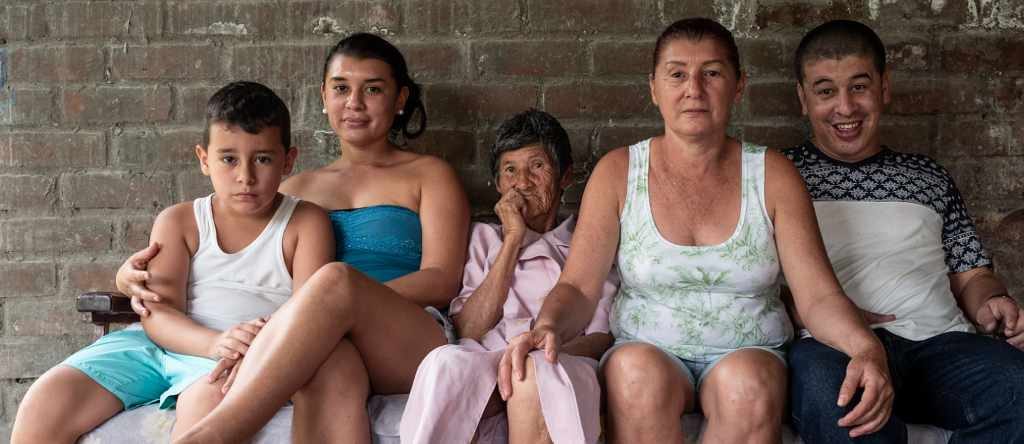It’s late afternoon in Ricaurte, a tiny town tucked into the Colombian Andes, when Mercedes Triviño, 82, lights the wood stove to start preparing dinner. Smoke fills the two-bedroom home she shares with six of her adult children.

Francia, 38, one of the youngest, is the family’s primary breadwinner. She brings home 28,000 Colombian pesos (roughly $10) a day harvesting papayas in the fields just outside town. “Really, what I earn is just enough for eating and nothing else,” she says. Four of her siblings have fragile X syndrome, a genetic condition that causes intellectual disability, physical abnormalities and, often, autism. Jair, 57, works alongside Francia when he can. Hector, 45, is also somewhat able to care for himself. But Victor, 55, and Joanna, 35 — who has both fragile X and Down syndrome — are less independent.
As Mercedes serves coffee on this afternoon in July, sweetening it with a hefty dose of sugar and offering her best cups to her guests, she talks about the condition that dominates the lives of her family and many others in Ricaurte. Her niece, Patricia, 48, who lives a few blocks away, cares for two adult sons and a nephew with fragile X. More distant kin in town, the Quinteros, also have grown children with the condition. Other neighbors are adults with fragile X who have no caretaker and do their best to look after one another.
In Colombia, Ricaurte has long been known as the home of los bobos — ‘the foolish ones’ — thanks in part to a 1980s novel and subsequent television series that depicted families like the Triviños. More recently, scientists have caught on to the fact that the town is home to what may be the world’s largest cluster of people with fragile X. One researcher in particular, medical geneticist Wilmar Saldarriaga-Gil of Universidad del Valle in Cali, Colombia, has made Ricaurte the focal point of his scientific inquiry. Saldarriaga-Gil, who vacationed nearby as a child, says he has visited the town about 100 times since the mid-1990s to trace the impact of fragile X on its inhabitants — and to try to understand the condition’s biology.
“This is a history of scientific research, a history of my community, a history of my life,” he says.
The payoff from research in this town could have a global impact. Caused by mutations in a gene called FMR1 on the X chromosome, fragile X syndrome is the leading cause of inherited intellectual disability worldwide; it affects as many as 1 in 2,000 men and 1 in 4,000 women. And as a single-gene cause of autism — a recalcitrantly complex condition — it has been the focus of drug development efforts in autism. The proteins disrupted in people with the syndrome are also key players in brain development.
“When I first visited this town, I said, ‘Oh my God, this is like ground zero for fragile X.’” Randi Hagerman
In March, Saldarriaga-Gil and his colleagues reported that at least 5 percent of the town’s residents carry either the full-blown fragile X mutation or less severe ‘premutations’ that can trigger the condition in future generations. Premutation carriers usually escape cognitive problems, but some develop physical symptoms, including tremors and fertility problems. The research in Ricaurte might explain such variability, which could reflect how the protein FMR1 encodes, FMRP, interacts with other proteins and pathways.
The scale of Saldarriaga-Gil’s investigations is small — Ricaurte has only 58 full mutation and premutation carriers, by his count — but the research benefits from the fact that the town’s residents share the same environment and a similar genetic background, offering a natural control for some variables. “What you have [in Ricaurte],” says Jim Grigsby, professor of psychology and medicine at the University of Colorado Denver, who is not involved in the research, “is something that certainly warrants a lot more intensive investigation.”
Continue reading at Spectrum.

